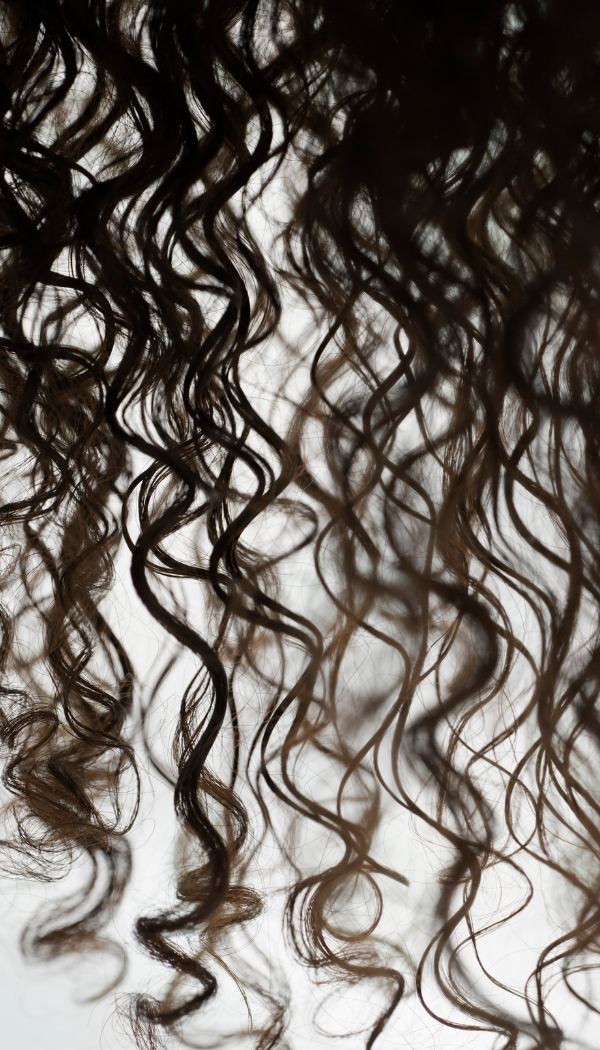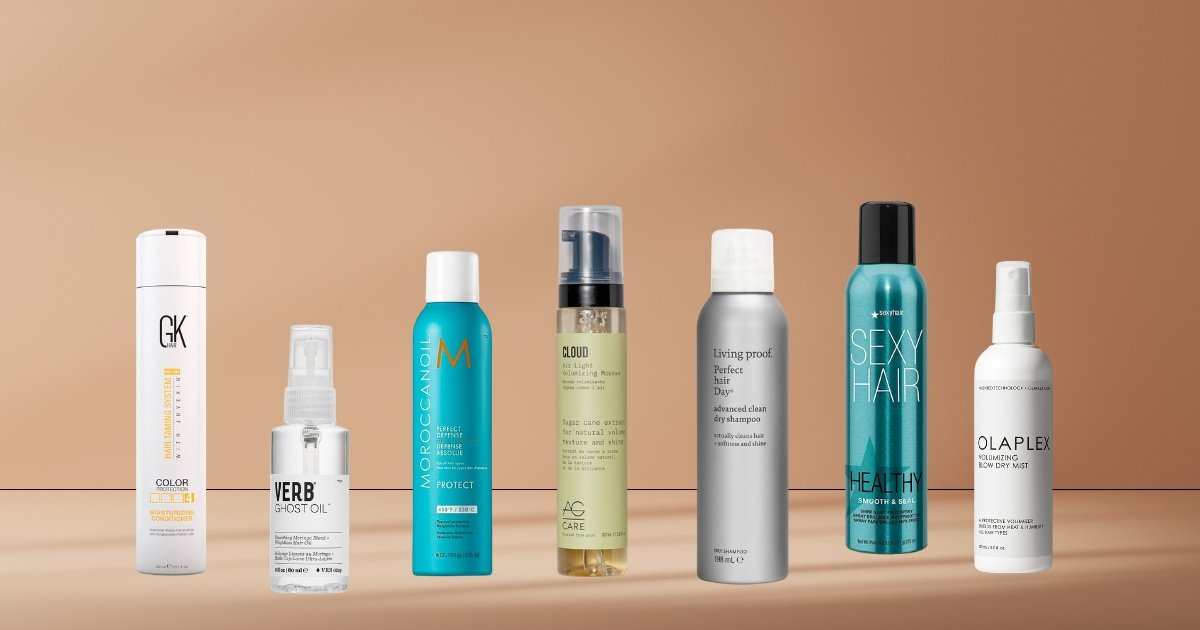Curly vs Wavy Hair - What’s The Real Difference?
This post may contain affiliate links, which means I'll receive a commission if you purchase through the link at no extra cost to you. Please read the full disclosure here.
When first identifying the necessary steps required for hair health and upkeep, it is essential to understand what type of hair you have and how that may affect your hair care routine.
Even though it may seem clear what type of hair someone has at first glance, there are more ways to identify different hair types and the qualities that come with them.
There are also factors like density, porosity, elasticity, and thickness, which all contribute to different hair textures.
Once you’ve identified if you have curly vs. wavy hair, you can then customize your routine to suit your hair’s needs and test out new product recommendations.
What is hair density?
Hair density refers to how much hair is on the scalp. If you can see your scalp without parting your hair, you have thin-density hair. Likewise, if you can only see it slightly from underneath your hair, you have medium density.
Finally, high density refers to having a very thick hair density that makes seeing your scalp almost impossible without parting the hair.
Similarly, thickness refers to the width of each individual strand and can be determined by holding a single strand of hair.
Depending on how well you can feel the strand between your fingers, this will clue you into how thick or thin your hair is.
How do I determine the porosity of my hair?
Next up is porosity, which affects how much or how little moisture your hair absorbs.
To figure out your hair porosity, take a strand of hair that has shredded off of your scalp naturally and put it in a glass of water.
If you have low porosity hair, your strand should float at the top of the water. If you have normal porosity hair, the strand will slowly sink to the cup's bottom.
If your hair is high porosity, it should immediately sink to the bottom of the cup. Knowing your hair’s porosity is highly beneficial when deciding on the right products.
What is hair elasticity?
Finally, elasticity is also an important thing to consider when addressing hair issues.
Elasticity determines the way your hair looks in terms of texture and bounciness. By stretching a curl and watching how quickly it returns, you may assess the elasticity of your hair in addition to the.
If the curl does not recover as quickly or at all, there is insufficient moisture, and argan oil or deep conditioner may be needed.
The Difference between wavy and curly hair
The best way to identify if you have wavy or curly hair is to assess your curl pattern.
On the complete opposite side of the spectrum, we have straight hair, a hair type that does not curl naturally without using heat tools or curling products.
Wavy hair may look similar to both straight and curly hair at times, but the difference is that the strand doesn’t form a tight spiral design, and it doesn’t lie pin-straight naturally.
A wavy head of hair tends to resemble an S pattern more than a spiral, as the natural wave is much looser.
Wavy hair is also significantly rougher and oftentimes thicker than straight hair and does not complete the full 360-degree circle.
Curly hair resembles a spiral shape, making a 360-degree circle and twisting from the root. Depending on the type of curl, your hair may be kinky, coily, or ringlet-shaped. When identifying hair type, the tightness and shape of the curl are what help determine whether the hair is wavy or curly.
Is wavy and curly hair the same?
As we previously mentioned, the waves in wavy hair are looser and only slightly curl but do not complete a full circle, whereas curly hair is more coily and naturally completes a full spiral.
Is it possible to be between curl types?
Yes! Many individuals have different types of curls on different parts of their heads, and sometimes a curl type doesn’t completely fit the look or feel of your hair. Being in between curl types or having several curl types on your head is common.
Determining your curl type
There are nine types of curl patters. All which are described below
Type 2a
2A hair is the loosest form of wavy hair and slightly resembles an S shape at the wave level. Often times the hair will resemble straight hair at the root and become wavier at the bottom.
Type 2b
2B hair is the hair type that people most commonly think of when it comes to wavy hair. 2B hair is still on the looser side and sits comfortably between straight and curly hair, boasting loose loops throughout.
Type 2c
2C waves are commonly mistaken for curly hair, as the waves look a bit tighter and form the S pattern perfectly. 2B hair is also less straight at the root, unlike the first two wave types, and offers a more defined curl. 2C waves can become more defined with the use of a diffuser attachment.
Type 3a
3A hair is where we begin to enter curly territory. 3A curls are still less kinky than the hair types in the 4 range, but they do form a loose spiral from the root to the tip. 3A hair is typically lower density than the coily types, which means that additional products may be needed to achieve volume.
Type 3b
3B hair typically spirals 360 degrees and is thicker than 3A hair. 3B hair is prone to dryness, which is where products like deep conditioners may be life-saving. The key to defining these curls is to apply product throughout the hair and scrunch from the tip to the root as the curly girl method advises.
Type 3C
3C hair is curlier than 3A and 3B hair, as the spirals are tighter and the width of a corkscrew or pencil. 3C curls are typically more defined but are at risk of dryness, frizz, and tangling, so they should be regularly tamed using a wide-tooth comb.
Type 4a
4A hair is where the kinkier types begin, and this curl pattern is significantly denser. Despite the kinky texture, 4A hair has more of an S pattern than the remaining hair types, which is why it experiences less shrinkage.
Type 4b
4B curls are less defined and resemble more of a Z shape than an S. 4B and 4C hair are very similar, but 4B hair has more definition and bends easier. 4B strands are wiry but can also be coarse in some areas.
Type 4c
Finally, 4C hair is also known as kinky or coarse and is extremely dense. 4C hair is susceptible to shrinkage and has varying levels of curls throughout, forming a zig-zag pattern. Even with wet hair, 4C and 4B hair do not lose shape. 4A hair will need to be moisturized every day or every other day, as it is one of the driest hair types.
Common Wavy and Curly Hair Mistakes
When picking what to put in your hair, it's crucial to research the ingredients, companies, and reviews.
The secret to keeping moisture in your hair is to use a leave-in conditioner with nourishing elements. Leave-in conditioners save your hair from harm and facilitate the detangling procedure. Once your hair is dry, this makes styling it is simpler.
Brushing your dry curls can result in rapid frizz and breakage, much like using towels. Using a detangling brush in the shower or on damp hair can be a terrific way to get rid of bothersome knots. However, when combing through tangles, be gentle and avoid tugging.
How to Care for Curly and Wavy Hair
To battle dry hair and add more moisture, you should invest in a hydrating and curl-enhancing shampoo or conditioner. Not only will this help nourish the hair follicle, but it will also help define your curls so that they rest perfectly throughout your day.
The simplest way to give your curly hair the lack of moisture it needs is to use a deep conditioner. Not only are deep conditioners formulated to help penetrate the hair quicker than shampoo and conditioner, but they also work to fight frizz.
It also may be worthwhile to cut down on using shampoo every time you wash your hair, as shampoo strips the hair of built-up moisture and oils. If used too frequently, this can end up drying out the hair and causing brittleness. Try adding a co-washing shampoo into your hair care routine. These shampoos are more gentle and hydrating to the scalp and hair.
Curly and wavy hair offers many styling possibilities, but in order to get the most out of your mane, it is important to research how to care for your unique hair type.



















